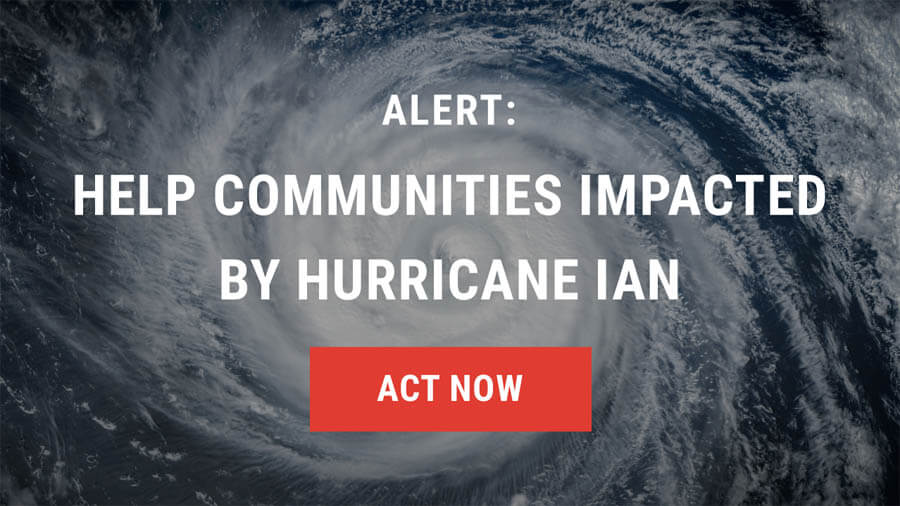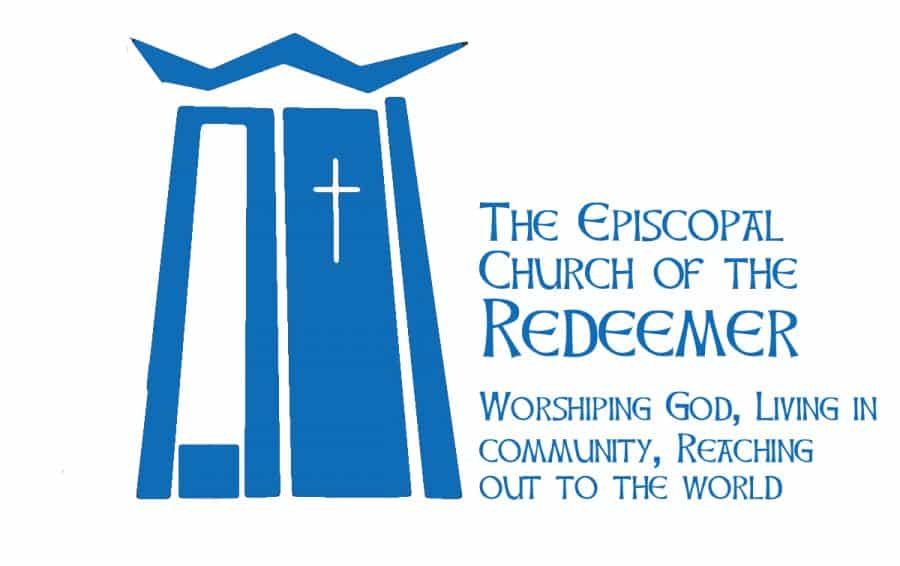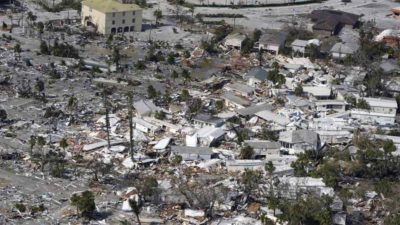[Episcopal News Service] Hurricane Ian’s path of destruction across Florida has left many Episcopalians in the dark, both literally and figuratively, as they try to figure out how their neighbors and buildings have fared. Many evacuated and are sheltering away from their home communities, without reliable power or phone service, and cannot return yet.
Ian was so destructive that the extent of the damage it caused may not be known for days; there may have been “substantial loss of life,” President Joe Biden said on September 29, 2022. Thousands of people were still waiting to be rescued, local officials said in the morning, and more than 2.6 million customers remained without power.
The path of Hurricane Ian
Ian came ashore near Fort Myers on the afternoon of September 28 as a Category 4 hurricane with winds of about 150 mph, as storm surge left parts of the area under several feet of water. As the storm moved inland, 10 to 20 inches of rain caused record flooding on Central Florida’s lakes and rivers; floodwaters could take weeks to recede in some cases. The day before, Ian hit Cuba as a Category 3 storm, knocking out power to the entire island and killing at least two people. Episcopal Relief & Development is working with the Episcopal Church in Cuba to assess damage and organize relief efforts.
Although Ian weakened to tropical storm status by the time it moved east over the Atlantic Ocean, it is predicted to regain strength and strike the Charleston, South Carolina, area as a Category 1 hurricane on September 30.
Diocese of Southwest Florida
The Diocese of Southwest Florida, covering most of the state’s Gulf Coast, took the most direct hit. Lindsey Nickel, the diocese’s director of communications, said Bishop Dabney Smith and newly consecrated Bishop Coadjutor Douglas Scharf were trying to contact clergy and congregations to assess the situation. The diocesan convention scheduled for October 14-15, 2022, in Punta Gorda has been canceled and will be rescheduled later.
“The last 36 hours have been harrowing for many of us in the Diocese of Southwest Florida,” Smith wrote in an email. “Many of our churches and huge numbers of our parishioners are now faced with the daunting task of recovering from the effects of Hurricane Ian. Such recovery efforts will take much time and energy.”
Nickel said the diocese is already working closely with Episcopal Relief & Development, but specific needs are still being identified.
“At this point, the most beneficial form of assistance is financial, as we do not have the means to effectively coordinate or distribute supplies. Financial assistance will enable us to respond quickly and adaptively to the specific needs on the ground,” she said.
Sanibel Island
Sanibel Island, near Fort Myers, was cut off from the mainland when part of its bridge washed away, leaving St. Michael and All Angels Church inaccessible. The Rev. Bill Van Oss, rector, and his wife Sue, the church’s communications director, evacuated to Fort Myers, but they know some of their parishioners didn’t.
“We have no word from the island,” Sue Van Oss told ENS. “It is completely cut off. … We have no cell service or power. We walk to the hospital to get a few minutes of Wi-Fi. Our immediate need is to make sure the first responders get to the people that were left on the island via boat or helicopter.”
Boca Grande
Boca Grande, on another barrier island near Fort Myers, also sustained major damage. The Rev. Michelle Robertshaw, rector of St. Andrew’s Episcopal Church there, said residents and business owners who evacuated are not allowed back on the island for 48 hours while emergency crews are assessing damage, but some who stayed behind said the church is “intact.”
“But,” she told ENS, “I have not been able to get on island to assess what ‘intact’ means – is there water damage? Is the roof sheared off?”
Fort Meyers Beach
St. Raphael’s Episcopal Church in Fort Myers Beach was also in one of the worst-hit areas. Videos have shown water up to the roofs of homes there; Lee County Manager Roger Desjarlais said an aerial survey showed that some buildings in town “are simply missing.” The Rev. Jean Hite, rector of St. Raphael’s, told ENS she was still trying to get basic information from her evacuation site.
“We’re just getting news on the radio at this point, but the beach itself is pretty much devastated,” Hite said. “I understand that pretty much everything around the church was flooded. We have a few parishioners that I haven’t been able to get in contact with that I know are in the area, so I’m trying to do that by whatever means possible. Other than that, I can’t give you any details. It just looks devastating.”
—Egan Millard is an assistant editor and reporter for Episcopal News Service. He can be reached at emillard@episcopalchurch.org.
Support for those Affected by Hurricane Ian
Episcopal Relief & Development is in close contact with Episcopal dioceses in the southern United States and Cuba in response to Hurricane Ian, which made landfall in Cuba on Tuesday, September 27, and in southwest Florida on Wednesday, September 28.
Cuba
In Cuba, the category 3 storm killed two people and knocked out power to the entire country.
“The Episcopal Church in Cuba has mobilized its local disaster committees who are assessing the damage, and potential responses, in their communities,” said Kellie McDaniel, Program Officer, Episcopal Relief & Development. “We pray for the people of Cuba who are living through several recent disasters.”
Southern United States
Hurricane Ian intensified to a category 4 storm before making landfall again on Wednesday near Port Charlotte, Florida with winds of 150 mph. As of Thursday morning, more than two million people were without power and a storm surge of up to 12 feet caused severe flooding. The storm also caused flooding in the Florida Keys after heavy rain on Tuesday night. It is expected to reach Georgia and South Carolina by Friday.
Dioceses in Florida, Georgia and South Carolina have been preparing this week by checking in with communities in the storm’s path, testing emergency communications systems and coordinating with area agencies.
“Our partners in the southern United States have deep roots in the community and are using their relationships to assess the needs caused by Hurricane Ian,” said Lura Steele, Program Officer, US Disaster Program, Episcopal Relief & Development. “We stand ready to assist in the coming days and weeks.”
Please pray for the people impacted by the storm. Donations to the Hurricane Relief Fund will support Episcopal Relief & Development and its partners as they respond.

Episcopal Relief & Development
For over 80 years, Episcopal Relief & Development has been working together with supporters and partners for lasting change around the world. Each year the organization facilitates healthier, more fulfilling lives for more than 3 million people struggling with hunger, poverty, disaster and disease. Inspired by Jesus’ words in Matthew 25, Episcopal Relief & Development leverages the expertise and resources of Anglican and other partners to deliver measurable and sustainable change in three signature program areas: Women, Children and Climate.

Church of the Redeemer
Church of the Redeemer: Worshiping God, living in community, and reaching out to the world around us. We are an Episcopal Church serving north King County and south Snohomish County, Washington. As you travel your road, go with friends walking the way of Jesus at Redeemer.
Church of the Redeemer is at 6210 Northeast 181st Street in Kenmore, Washington. The campus is a short distance north of Bothell Way, near the Burke-Gilman Trail. The entrance looks like a gravel driveway. The campus is larger on the inside than it is on the outside. And we managed to hide a large building on the side of a hill that is not easily seen from the street.
The Episcopal Church welcomes you.






